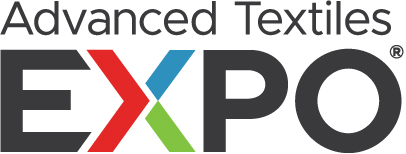Thinking about selling your business—either to an outside party or the next generation? Then it’s time to start considering how your equipment and processes fit into your succession plan.
Jonathan Palmer, the second-generation owner and CEO of equipment supplier Autometrix, and Autometrix director of global sales Truy Pham, led an educational session at IFAI Virtual Expo 2020 on how to set up a business so that it is attractive to a buyer when the owner is ready to pass on the reins.
While the volatile environment of 2020 may not be a good time to sell a business, Pham said that it is a good time for an owner to look into the mirror and start asking tough questions: How do I fix production problems that lead to quality issues in the product? What is the life expectancy of the machines on the sewing floor? Can they be rebuilt? Do they need to be replaced? How do I train employees and/or family members to help them understand all aspects of the business so that they can run it without me? What timeline should I expect to implement all of these projects? Can I even do this on my own?
“Fixing these issues in your production will naturally increase how attractive your business looks to others,” Pham said. “And if you wait until you’re ready to sell or somebody approaches you to buy your business, the part of what makes a business run efficiently won’t be integrated in time. This needs to happen now.”
Owners can start by asking themselves about the value in their company, as opposed to the value of the company, Palmer said. Sometimes, potential buyers look at an existing business and see more risk in purchasing it than in starting a business themselves and growing it how they want to grow it at their own pace.
“People fear the negatives,” Palmer said. “Building the value to a potential buyer means you have to ease those fears. You have to demonstrate that within your company—the way it’s built, the way it runs—there’s value that they can’t easily replicate. They can’t just go out and build a company in their own image and quickly be providing the same value to the market that you have been providing over these years.”
Whether they involve sales, service, or production, properly recorded processes help a business to function without the owner being present to guide it each and every day, Palmer said. A business that is attractive to a buyer is one that isn’t dependent on a specific individual with specific skills. New owners are looking to replicate a business’s success immediately, and the worst outcome for a buyer is interrupted cashflow as they take on ownership and management, he added.
“It means that if one of your managers decides to quit because they don’t like the way the new owner is running things, the whole way that part of the business runs doesn’t walk out the door with them, because there’s a process that multiple people are familiar with, and there’s some type of recorded information within the business that is sold with the business.”
Equipment that augments skilled labor means that a business can bring new employees up to speed faster, and automated equipment-based processes assist a new owner in continuing to produce at the same level of quality that the business’s customers are used to. A buyer also wants to see a potential for growth, and that potential can lie in unused equipment capability and capacity, Palmer said. Finally, the successful adoption of automated equipment and processes is a sign of company culture—and one less hurdle for a new owner to overcome. It’s all about making the existing business look more attractive than starting a new one.
“What’s taken me 10, 15, 20 years to build would take you 10, 15, 20 years to build as well,” Palmer said.
Registration for IFAI Virtual Expo 2020 is open through Nov. 12. All Expo sessions will be posted on the Virtual Expo platform for viewing during Expo and for 30 days after Expo has concluded.
 TEXTILES.ORG
TEXTILES.ORG


